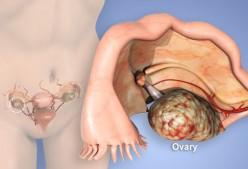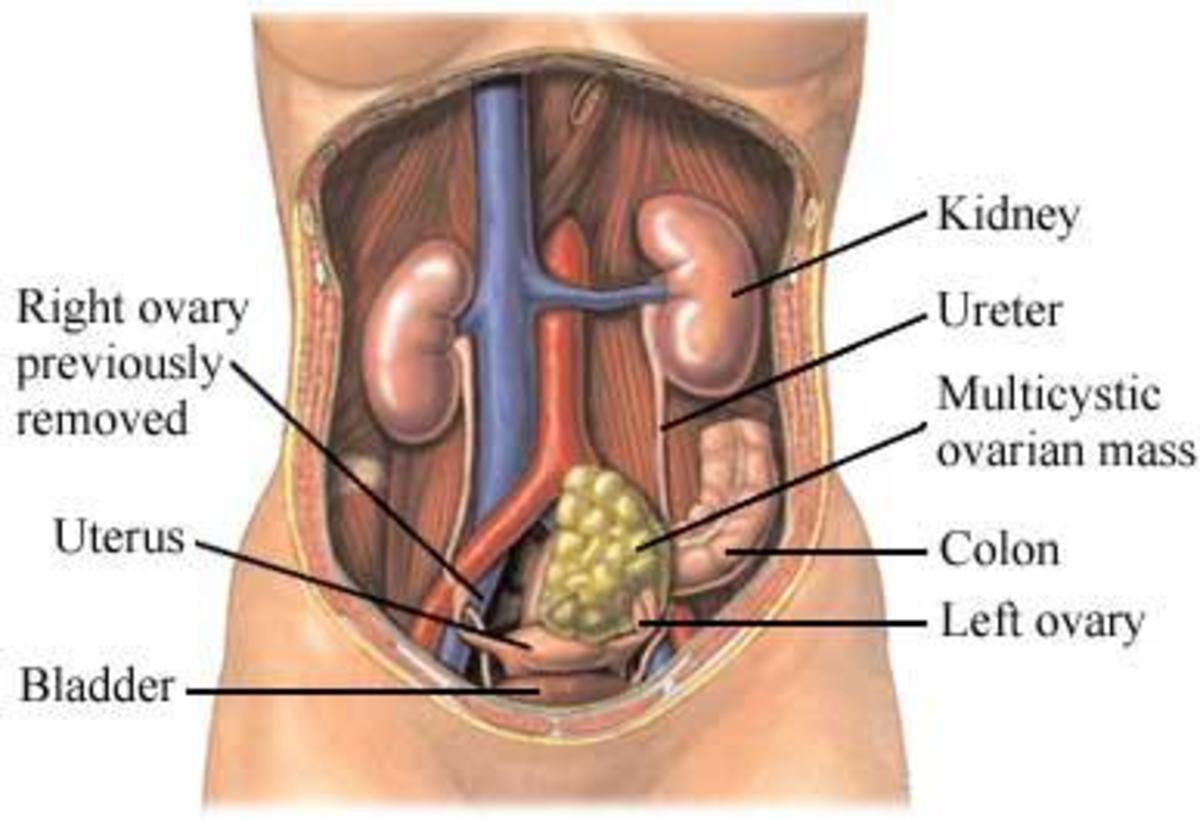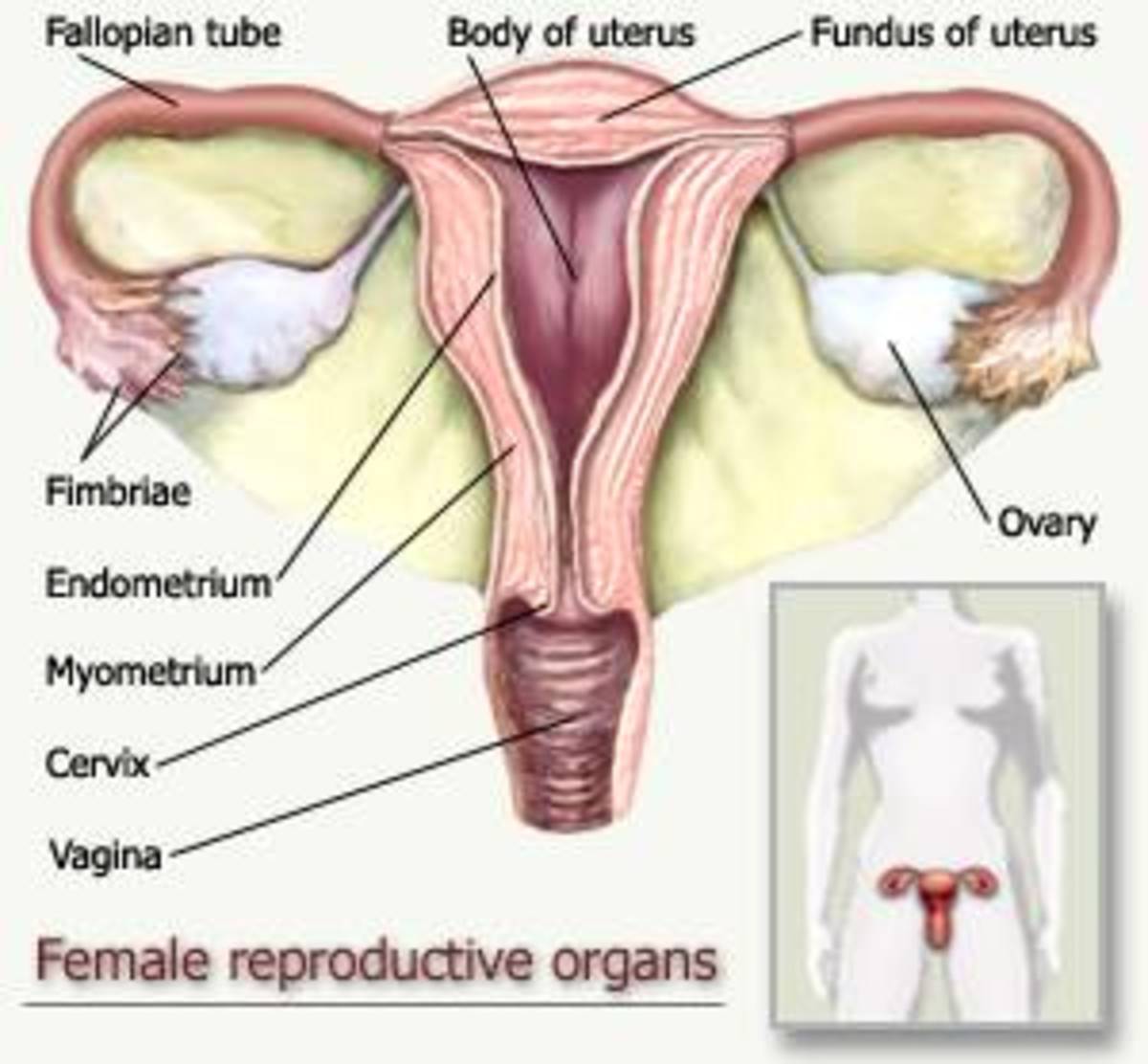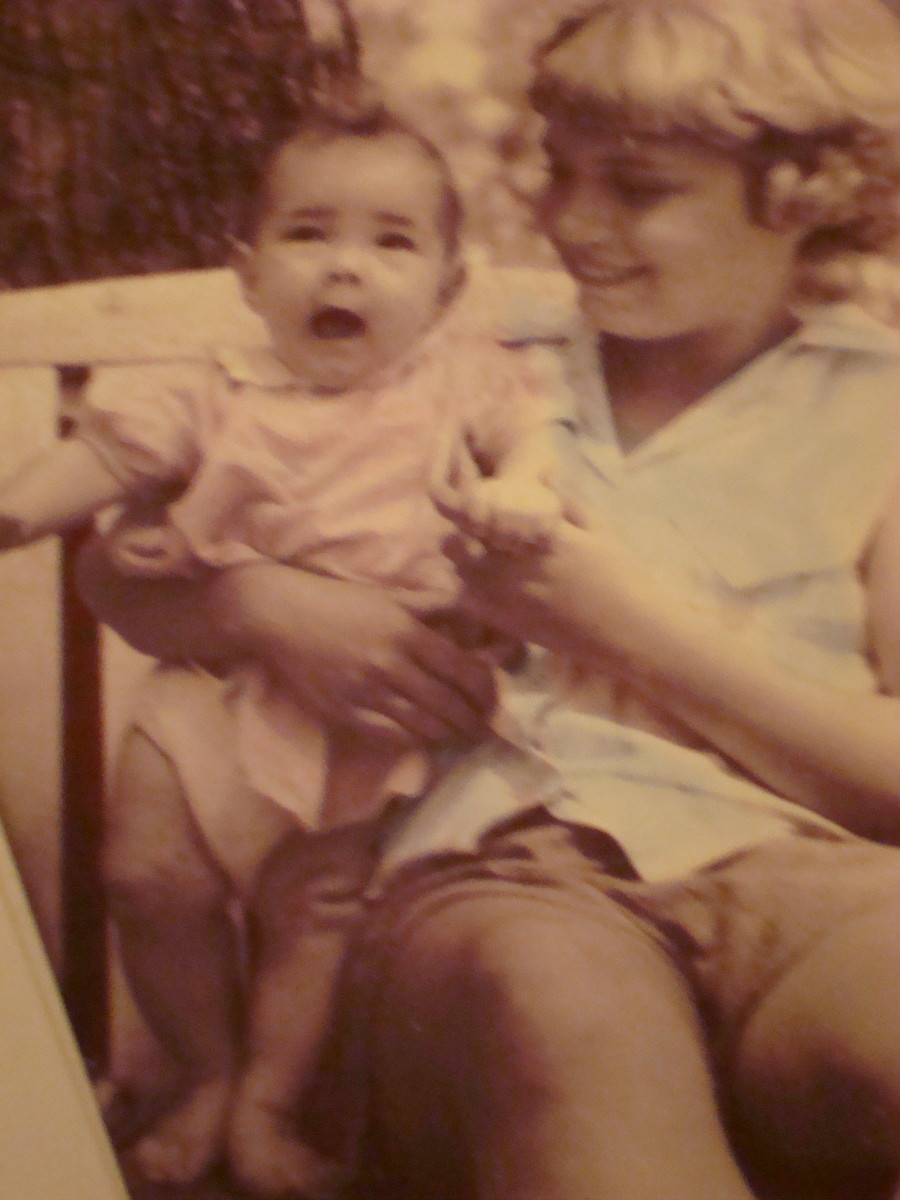How Heritable Breast Cancer and Ovarian Cancer Develop
Image of breast
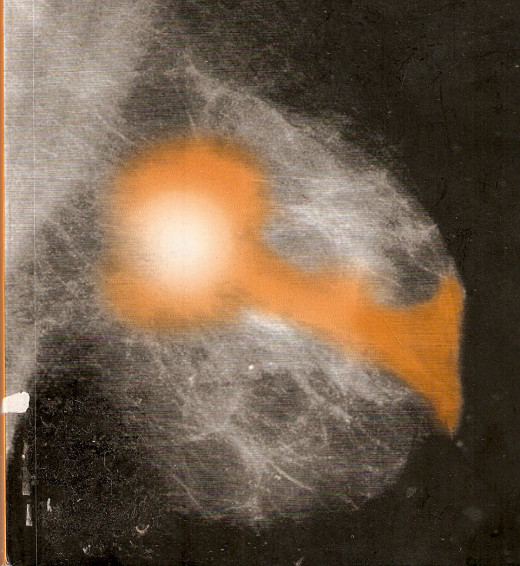
Cord blood being collected (Photo derived from "Supercell," HBO documentary films. Internet. Jan. 10,2013)
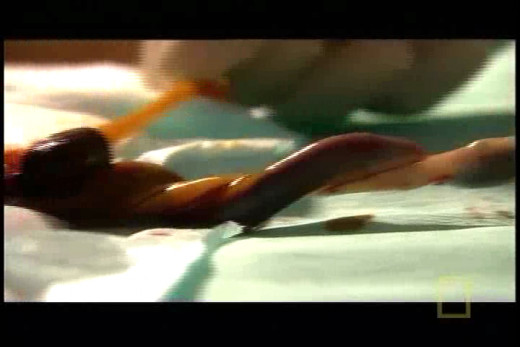
Prevent mutations in BRCA1 and BRCA2 genes that are links to predisposition of a person to breast and ovarian cancer
By Conrado D. Fontanilla
BRCA1 is the gene linked to heritable predisposition to breast cancer; BRCA2 is the gene linked to heritable predisposition to ovarian cancer. However, they are not the causes of these cancers. A change or mutation in these genes trigger cancer in the breast and ovary. Therefore, the causes of mutation are the causes of breast and ovarian cancers.
In the United States, 40,000 die of breast cancer; 215,000 are diagnosed each year (Cummings, M. Human Heredity, Principles and Issues. 2009:291-293).
Among females, 1 out of 200 inherit mutant allele; 80% of them will develop breast cancer.
A person with an inherited predisposition means that his/her parents has a mutated allele of a gene of BRCA1 or BRCA2. The mutation occurred in the germ cells like in the egg cell of the mother. Such mutation happened during meiosis, in the language of the geneticist. A gene is composed of two alleles. A person who inherited a predisposition has one mutated allele and another, a normal allele.
For as long as the normal allele is not mutated in his/her lifetime, a person who had inherited a mutant allele will not develop breast cancer.
The more common forms of breast cancer are: ductal carcinoma in situ, invasive (infiltrating) ductal carcinoma, and invasive (infiltrating) lobular carcinoma. The less common breast cancers are: medullary carcinoma, tubular carcinoma, papillary carcinoma, inflammatory breast cancer, and Paget’s disease of the breast. If one breast is diagnosed with cancer, the other has a risk of 10 to 25 percent or higher of developing breast cancer (Kaelin, M.C. MD, MPH. Living Through Breast Cancer. 2005).
Tests are now available to find out if these genes had mutated. But the test does not mean that one will develop breast cancer. However, a woman with a mutation in BRCA1 and BRCA2 may have a chance of 36% to 85% of developing breast cancer depending upon his/her exposure to causes of cancer during her/his lifetime. .
In 1990s, a link between a genetic marker and breast cancer was finally found after 20 years of search. The long search was started by Mary-Claire King (Cummings, M. Human Heredity, Principles and Issues. 2009:291-293). In 1995, the gene marker for ovarian cancer was found.
BRCA1 and BRCA2. are not linked to sex chromosomes like XX (that of woman) and XY (that of man). They are associated with chromosomes called autosomal. That means both man and woman can get breast cancer. However, women are more susceptible because of the anatomy and physiology of the woman's breast. Among women, the one more exposed to causes of cancer, the free radicals, is most likely to have cancer.
A chromosome is like a fruit of string beans. A bean fruit has seeds, each seed is like a gene.
The chromosome has a divider that is sometimes located in the middle of the string beans; other times not in the middle. On opposite sides of the divider is a long arm (q) and a short arm (p).
BRCA1 is located on the long arm of chromosome 17. BRCA2 is found in the long arm of chromosome 13. There are 48 chromosomes of woman/man.
BRCA1 is a suppressor gene. It is activated when it senses damage in DNA, the heredity material. It is like a switch turned on by damage in DNA or deoxyribonucleic acid. Turned on, BRCA1 stops the replication (growth) of damaged DNA. It also starts to repair the damage in DNA.
Duplication occurs in somatic, also called mitotic cells. Cells like that of the skin, arteries, nerve, etc. are mitotic. Only the egg and sperm are not mitotic. Cancer occurs only in mitotic cells. Cancer starts with only one cell.
Inside a mitotic cell, each of the 46 chromosomes makes a copy of itself. The new daughter chromosome will move to a new daughter cell to be enclosed by a new membrane. That is why there will two cells after mitosis: one old and one new. One cell plus one cell spells growth.
In normal cells there is a signal that stops the duplication of cells. So there is no abnormal growth.
A cell with at least one damaged chromosome will produce a duplicate with a damaged or mutated chromosome. That is why mutation is passed on to a daughter cell.
The problem with cancer cell is that it does not stop growing because the stop light had been damaged, or the stop light is ignored. Cancer cells grow faster than normal cells. Damage to a chromosome increases in each generation of growth. That is the reason why the rate of worsening of cancer increases as the cancer advances.
Mutation
BRCA1 (with one allele mutated during meiosis and the other normal) and Rap80 together can pinpoint damage in DNA. BRCA1 with both alleles mutated cannot bind with Rap80, a protein.
Therefore, in one cell of the breast BRCA1 (both alleles mutated) cannot repair damaged DNA. Thus, damage accumulates; accumulated damage transforms the normal cell to cancer cell, according to Cummings. One way to repair damaged cell is by replacement, or programmed cell death called apoptosis. Cells in the body (except those of the brain, nerves, and cardiovascular system -- heart, veins, arteries, capillaries) have a life span and are periodically replaced. For example, blood cells are replaced every 140 days. Bones also have a turn over (American Orthopaedic Association. Manual of Orthopaedic Surgery. Sixth edition. 1985:186). A cell with accumulated damage cannot undergo apoptosis. That is, the damage cannot be thrown away such that the damaged cell is replaced with a new cell.
DNA is a double helix, like a spiral stairway. A gene consists of twin copies; one copy is located in a helix, the other copy is located in the other helix. One copy is called allele. In one pathway, a mutation in one copy (allele) will start a mutation in its sister allele (Cummings, M. Human Heritage, Principles and Issues. 2009). In another pathway, the normal allele can be mutated by environmental factors.
A person who had inherited a mutant allele of BRCA1 always carries one mutant allele in his or her cells. To recall, a gene is composed of two alleles. When the twin alleles of BRCA1 in one cell of the breast are both mutated breast cancer is initiated. The normal allele can be mutated by sporadic or environmental factors like free radicals. Environmental means it is not a part of a cell but a by-product of its processes like metabolism. The metabolism of glucose to produce energy has a by-product, the superoxide, that is a master free radical. It can produce hydrogen peroxide, hydroxyl, alkoxy radical, and bad cholesterol. These are technically not free radicals but they act like free radicals do because they grab electrons from molecules or tissues.
BRCA1 testing is paid for. Myriad and the University of Utah share the patent for BRCA1 and BRCA2. Myriad is reported to have spent US$500 million for research and marketing (Wang, J.Y. Our Bodies, Whose Patents? Newsweek 29,2010:11c)..
When the two alleles of BRCA1 are both mutated, cancer develops. BRCA1 is a gene, genes make up DNA. What starts damage in DNA? This question is worth reviewing.
Spontaneous (during meiosis) and sporadic (environmental) factors start mutation, according to Cummings.
Spontaneous mutation that is heritable causes 10 percent to 15 percent of breast cancer cases, according to Cummings. To clarify, in one cell one allele of BRAC1 had been mutated during meiosis. the other normal allele becomes mutated by the inherited mutated allele or by sporadic factors.
On the other hand, sporadic factors alone cause 85 percent to 90 percent of breast cancer, according to Cummings.
Holds true for BRCA2
The discussion for BRCA1 holds true for gene BRCA2. A mutation of one allele of BRAC2 is inherited during meiosis; the other allele is normal. When the normal allele in a cell in the ovary becomes mutated such that both alleles of BRCA2 are mutated, ovarian cancer is initiated. BRCA2, with both alleles mutated, cannot bind with Rap80 and repair damaged cell; damage in the cell accumulates and the afflicted ovarian cell becomes cancerous.
Sporadic factors include free radicals. A free radical is an atom or molecule or fragment of a molecule with at least one unpaired electron in its outermost orbital. That unpaired electron is free and unstable. To attain stability it grabs one electron from a molecule that belongs to a tissue. A tissue whose one or several electrons had been grabbed sustains an injury. That injury results in disease like tumor or cancer.
DNA is easy to injure because it consists of several hydrogen bonds, according to Cummings. A hydrogen bond is weak, only 5 percent as strong as the covalent or ionic bond. It is the weakest bond of the three that makes the electron from the hydrogen the favorite prey of free radicals and reactive oxygen species (ROS). A ROS is technically not a free radical but behaves like a free radical. ROS are derived from free radical, for example, hydrogen peroxide which originates from superoxide, a free radical.
When electrons from its hydrogen bonds are grabbed, DNA is injured resulting in diseases, among them is cancer.
Since sporadic mutation makes up a larger share in causing breast cancer, it merits a large share of attention. As much as possible damage from free radicals should be prevented. The housekeeping in the body is done by built-in enzyme antioxidants like superoxide dismutase (SOD), glutathione peroxidase, glutathione reductase, and lactase. These should be provided further assistance with supplement antioxidants (vitamins A, C, E, B complex, coenzyme Q10) and chelation therapy.
Built-in enzyme antioxidants are recyclable but not hundred percent. SOD can be recycled. SOD converts superoxide into hydrogen peroxide; glutathione peroxidase dismantles hydrogen peroxide; glutathione reductase recycles glutathione peroxidase by giving back the electron the latter used in dismantling hydrogen peroxide. Glutathione synthase makes glutathione out of glutamate, cystine, cysteine, and co-factors lipoic acid, zinc, B-2, and selenium. The body makes lipoic acid; the others come from nutrition.
Supplement antioxidants are sacrificial offerings in that they die once they had donated their electrons. However, some vitamins C and E are recycled. Vitamin C recycles vitamin E. Vitamin C is recycled by nicotinamide adenine dehydrogenase of respiration.
Antioxidants simply give their electrons (from the hydrogen in their molecule) to satisfy the hunger of free radicals and ROS for electron. Vitamin E has 37 electrons to give, meaning it can dismantle 37 free radicals. Vitamin C has eight; it can dismantle eight free radicals. Vitamin A (colored natural food like carrot is a precursor) absorbs heat and prevents or dismantles the singlet oxygen. Pigments absorb heat as they do during photosynthesis and the heat is lost as heat. Heat, especially from the sun (ultraviolet rays) energizes one of the unpaired electrons of molecular oxygen and reverses its spin. A molecular oxygen has two unpaired electrons in its outermost orbital that spin around the nucleus in the same direction. The singlet oxygen has one unpaired electron spinning in one direction, say clockwise, and the other unpaired electron spinning counterclockwise (Sharma, H. Freedom from Disease.1996). This opposite spin makes the singlet oxygen more hazardous than molecular oxygen. Molecular oxygen grabs one electron from another molecule one at a time while a singlet oxygen grabs two electrons simultaneously. So, singlet oxygen is capable of inflicting injury twice as much as molecular oxygen in 0.00000001 of a second, the usual life span of a ROS. A singlet oxygen that loses energy returns to its ground state, meaning it reverts as a molecular oxygen.
Chelation therapy consisting mainly of EDTA (ethylene diamine tetra acetate) captures free radicals and ROS and removes minerals like iron and copper that accelerate the production of free radicals and ROS like alkoxy radical and hydroxyl. Side benefits from chelation therapy are removal of plaque from arteries. It remedies hypertension, stroke, diabetes, arthritis, osteoporosis, emphysema, gangrene, and impotence.
We cannot escape from free radicals because our body produces them and we get them from the environment. But we should maintain a balance between antioxidants and the population of free radicals and ROS in our body.
It is more likely that free radicals cause the mutation of the normal allele in one cell. This topic deserves another Hub.
Ovarian cancer (Adopted from bonface, hubpages. Source: http://www.webmd.com
